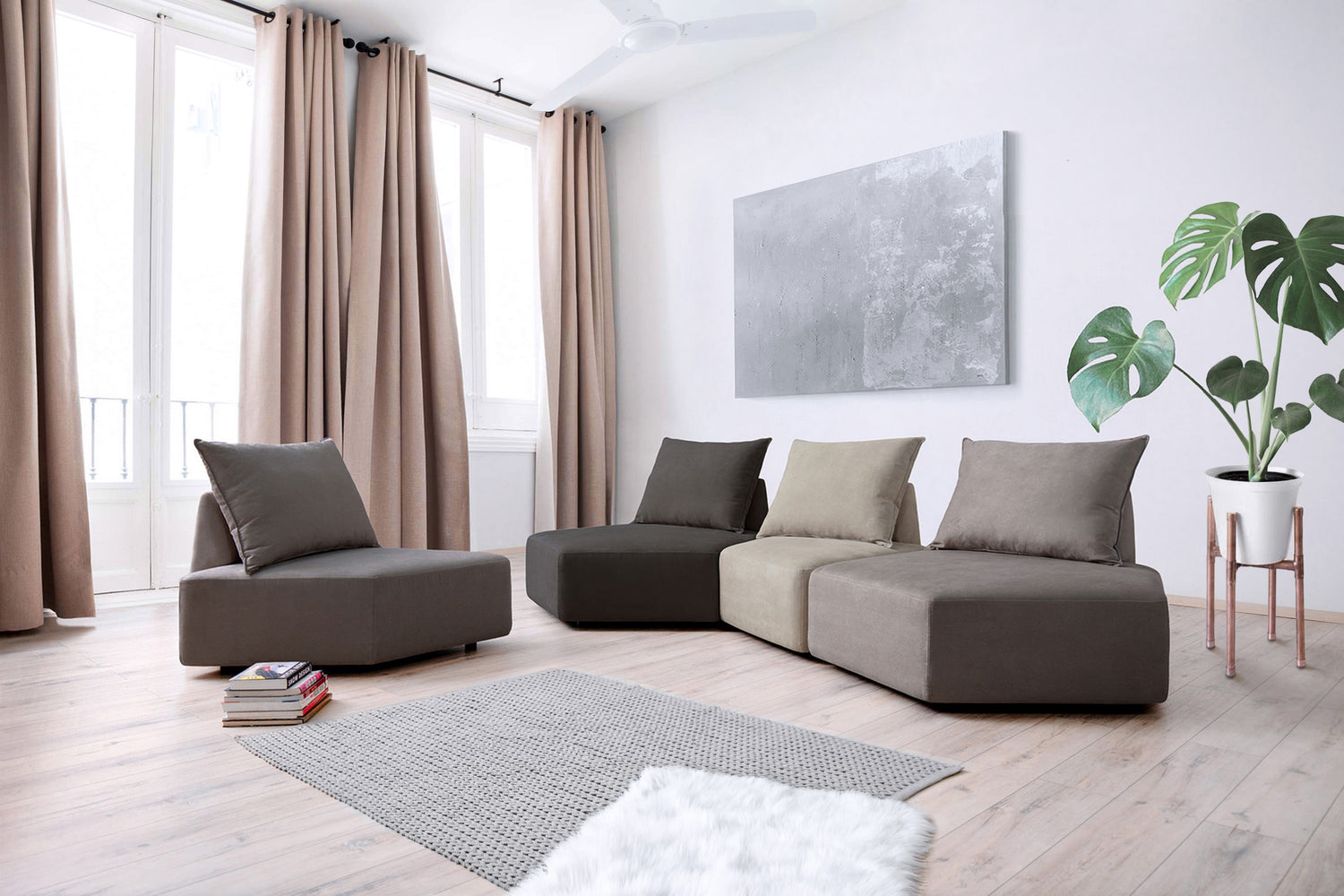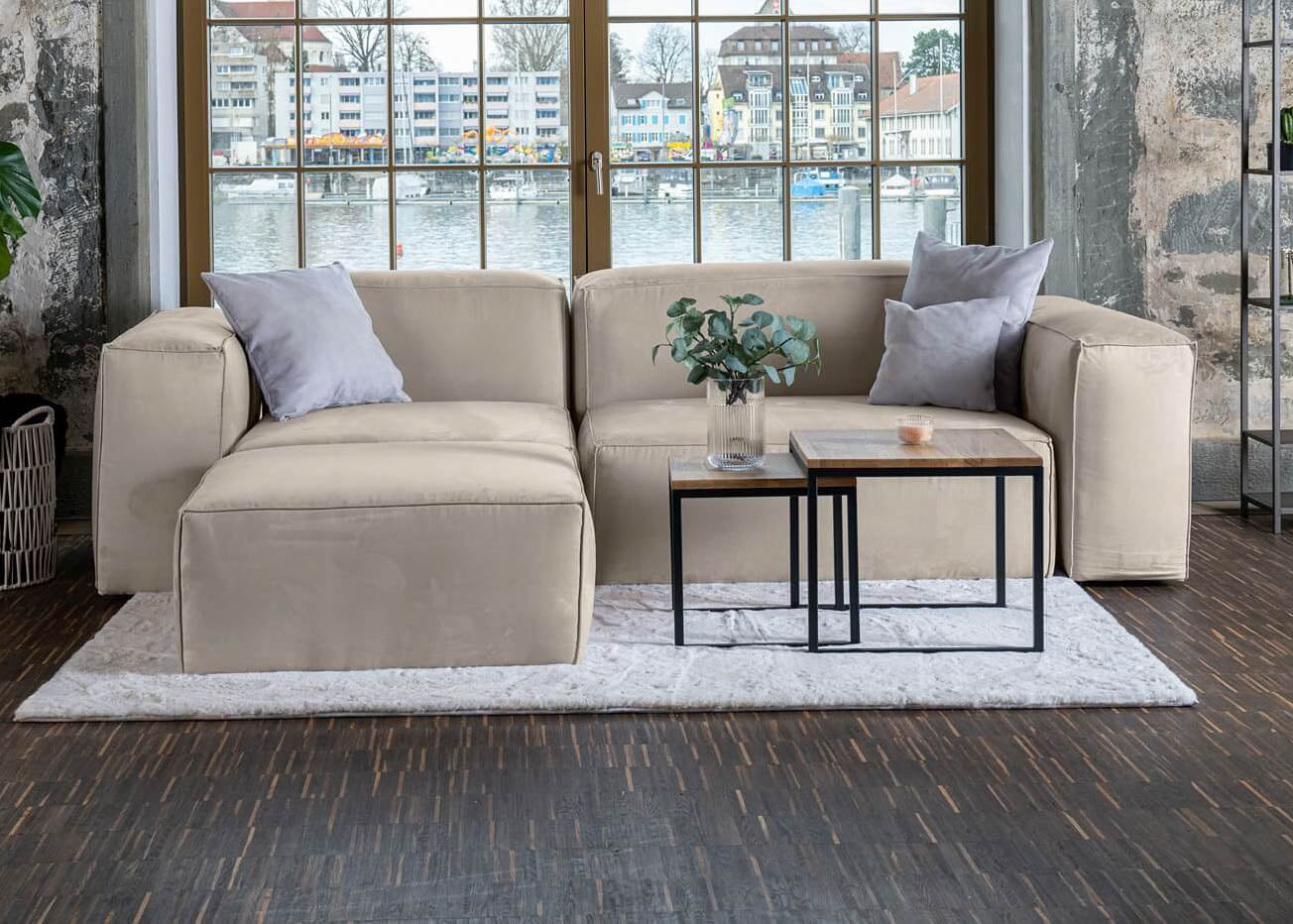When it comes to furnishing your own home, there are countless styles and trends to choose from. One of these styles that has become increasingly popular in recent years is the minimalist interior design style. In this article, we take a closer look at this style and give you tips and tricks on how to implement it in your own home.
What is the minimalist interior design style?
The minimalist interior design style is characterized by simplicity, clarity and functionality. Instead of overloaded frills, this style relies on clean lines, neutral colors and few, but high-quality pieces of furniture. The aim is to open up the space and create a calm, stress-free environment.
The minimalist furnishing style has its origins in the minimalism movement, which aims to reduce material possessions and focus on the essentials. The conscious decision to own only the essentials is intended to make life simpler and less stressful.
There are several features that characterize the minimalist furnishing style. These include
- Simple and clear lines in furniture and decoration
- Use of neutral colors such as white, beige or grey
- Reduced number of pieces of furniture and decorative objects
- Focus on functionality
Another feature of the minimalist furnishing style is the use of natural materials such as wood, concrete or glass. These materials lend the room a simple elegance and create a harmonious atmosphere.
A minimalist living room can be furnished with a simple sofa, a wooden coffee table and a discreet floor lamp, for example. The walls are painted in neutral colors and only a few selected decorative objects, such as a vase with fresh flowers or an abstract painting, adorn the room.
Here is an example with our Harvey modular sofa:

The minimalist bedroom often features a bed with a simple wooden frame, white bed linen and a few stylish bedside tables. The room is uncluttered and free of unnecessary items to create a calming and relaxing atmosphere.
The minimalist furnishing style can also be implemented in the bathroom. Clear lines and simple shapes dominate here. White tiles, a simple washbasin and a large, free-standing bathtub are typical elements of a minimalist bathroom.
The minimalist furnishing style is not only aesthetically pleasing, but also offers practical advantages. By reducing superfluous possessions, the space is visually enlarged and cleaning and maintenance is made easier. In addition, a minimalist home can contribute to better concentration and relaxation.
Advantages of the minimalist furnishing style
The minimalist interior design style offers numerous advantages that can help to create a harmonious and relaxing home.
Simplicity and clarity
By focusing on the essentials, the minimalist interior design style creates an atmosphere of simplicity and clarity. Less clutter means fewer distractions and more space for relaxation.
The simplicity of the minimalist interior design style allows residents to focus on the essentials and avoid unnecessary distractions. The clean lines and minimalist design of the furniture and decorations create a calming atmosphere that contributes to relaxation.
Another advantage of the simplicity and clarity of the minimalist furnishing style is that the room is easy to maintain and clean. Fewer objects mean less dust and dirt, which makes housework easier and leaves more time for other activities.
More space and less clutter
By reducing furniture and decorative objects, the room appears larger and more open. In addition, a tidy and orderly room ensures less stress and better mental relief.
Minimalist furnishings create space to breathe and allow residents to move around more freely. The reduction of superfluous objects creates a feeling of lightness and spaciousness, making the room appear larger.
Another benefit of reducing clutter is improved concentration and productivity. A tidy space promotes a clear mind and allows occupants to focus better on their tasks. This can be beneficial in both the home and work environment.
In summary, the minimalist interior design style is not only aesthetically pleasing, but also offers numerous benefits for the well-being and quality of life of the occupants. By creating a simple, clear and uncluttered environment, a harmonious and relaxing home can be created.
Tips for implementing the minimalist furnishing style
If you want to implement the minimalist interior design style in your own home, there are a few tips that can help you achieve the look you want.
The minimalist interior design style is characterized by its simple elegance and clean lines. It creates a calm and unobtrusive atmosphere that invites you to relax and feel good.
To successfully implement this style choosing the right colors is of great importance. Neutral colors such as white, beige and grey form the basis of the minimalist furnishing style. They ensure a harmonious and timeless aesthetic. Accent colors can be used sparingly to freshen up the room and give it a personal touch.
Another important aspect when implementing the minimalist furnishing style is the choice of furniture. Clear lines and simple design are key here. Avoid cluttered pieces of furniture and opt for functional and high-quality pieces instead. Less is more - that is the motto of the minimalist style.
You should also opt for restraint when decorating. A few, but targeted decorative objects can visually enhance the room without overloading it. Plants can be a wonderful addition and bring vibrancy to the room. However, make sure that you don't have too many plants to maintain the minimalist character of the room.
Another tip for implementing the minimalist furnishing style is to store items out of sight. Use closed cupboards and shelves to avoid clutter and create an uncluttered atmosphere.
The minimalist furnishing style is not only aesthetically pleasing, but also practical. The clear structure and minimalist design visually enlarges the room and gives it an airy and open feel.
In summary, implementing the minimalist interior design style requires a few basic principles, such as choosing the right colors, furniture and decorations. However, with a little planning and creativity, you can create a harmonious and stylish home that radiates calm and relaxation.
Avoiding the pitfalls of minimalist interior design
Although the minimalist interior design style offers many advantages, there are also some pitfalls that should be avoided.
Too empty and impersonal?
Sometimes the minimalist style can be perceived as too empty or impersonal. To counteract this, you should integrate personal items such as family photos or memorabilia into the furnishings to give the room a personal touch.
How to preserve warmth and coziness
A minimalist room can sometimes feel cool and uncomfortable. To maintain warmth and coziness, you can use textiles like cushions, rugs or curtains. Natural materials such as wood can also create a warm atmosphere.
Another important aspect of minimalist interior design is the right lighting. You can create a pleasant and inviting atmosphere with cleverly placed light sources. For example, use dimmable lamps to adjust the brightness to your needs. You can find out all about this in this guide: The right lighting for your living room.
A minimalist living room can also be made more interesting by choosing the right furniture and accessories. Opt for pieces with interesting shapes or unusual materials to add some excitement to the room. Remember that less is often more - choose carefully and avoid excessive decoration.
A minimalist bedroom should be a place of calm and relaxation. Therefore, choose calming colors such as white, beige or soft pastels. Avoid too many patterns and keep the furnishings simple and uncluttered. A large, comfortable bed and high-quality bed linen ensure a restful night's sleep.
In a minimalist bathroom, it's important to keep things tidy and only use the essentials. Opt for simple but high-quality fittings and choose a color palette that radiates calm and cleanliness. By using natural materials such as marble or wood, you can add a luxurious touch to the room.
A minimalist workspace should be free of distractions. Choose a simple desk and a comfortable chair to enable productive work. Keep the space tidy and organize your documents in practical storage solutions.
Minimalist furnishing examples
To give you an idea of what the minimalist interior design style can look like, we have put together some inspiring examples of minimalist living rooms, bedrooms and kitchens here.
Minimalist living room
A minimalist living room is dominated by clean lines, neutral colors and sparing use of decorative elements. A large, open space creates a relaxed atmosphere in which you can unwind.
Minimalist furnishings don't have to mean a lack of coziness. By carefully selecting furniture and accessories, a minimalist living room can still look inviting and comfortable. A comfortable sofa in neutral colors, combined with a minimalist coffee table and a few decorative cushions, creates a harmonious balance between functionality and aesthetics.
Another feature of a minimalist living room is the reduction of visual noise. This means that electronic devices such as televisions and stereos should be placed discreetly so as not to distract attention from the overall picture. Instead, a minimalist living room can provide an eye-catching feature through the use of artwork or an eye-catching plant.
Minimalist bedrooms
The minimalist bedroom is all about creating a calm and peaceful environment. Few pieces of furniture, a simple color scheme and an uncluttered atmosphere offer you the perfect retreat to relax and unwind.
A minimalist bedroom is characterized by clean lines, neutral colors and a minimalist furniture selection. A bed with a simple design and high-quality materials is the focal point of the room. To reinforce the minimalist concept, you can do without bedside tables and instead use wall shelves to place books or a small lamp.
The choice of colors plays a decisive role in a minimalist bedroom. Light and neutral shades such as white, beige or gray create a calming atmosphere and make the room appear larger and more open. Accent colors can be used sparingly to give the room some personality without overloading the minimalist concept.
Minimalist kitchens
In a minimalist kitchen, functionality comes first. Clear work surfaces, well-organized cabinets and high-quality appliances ensure a stress-free cooking experience.
The design of a minimalist kitchen focuses on clean lines, simple shapes and a reduced color palette. White or light-colored kitchen cabinets, combined with a wooden or stainless steel worktop, create a timeless aesthetic. To complete the minimalist look, kitchen appliances and utensils should be carefully selected and only those that are really needed should be kept.
Another feature of a minimalist kitchen is organization. By using clever storage solutions such as drawer organizers, hanging rails for kitchen utensils and well-designed cabinet systems, the workspace is kept tidy and efficient. A minimalist kitchen style allows you to enjoy your cooking without being distracted by clutter.
Conclusion: implementing minimalism in your own home
The minimalist interior design style offers many advantages and can help to create a harmonious and relaxing home. With the right colors, furniture and decorative objects as well as a few personal touches, you can implement the minimalist style in your own home. Try it out and experience the benefits of a minimalist lifestyle.
Minimalism is not just a furnishing style, but also a philosophy of life. It's about focusing on the essentials and getting rid of unnecessary clutter. By designing your home in a minimalist way, you not only create an aesthetically pleasing environment, but also a calm and uncluttered atmosphere that can have a positive effect on your well-being.
An important aspect of the minimalist interior design style is the use of neutral colors such as white, grey and beige. These shades create a timeless and calming atmosphere and make your home feel larger and airier. Combine these colors with natural materials such as wood and linen to create a warm and cozy charm.
When choosing furniture, you should focus on simple and functional designs designs. Avoid overloaded and playful pieces and instead opt for clear lines and a minimalist design language. Less is definitely more here. Opt for high-quality pieces of furniture that are durable and will give you pleasure for many years to come.
To give your minimalist home a personal touch, you can add specific accents. Choose one or two decorative objects that are particularly close to your heart and place them strategically in your living space. These could be works of art, plants or mementos, for example. These targeted accents will turn your minimalist home into an individual and unique retreat.
In addition to the aesthetic component, the minimalist furnishing style also offers practical benefits. By reducing unnecessary possessions, you create more space and order in your home. You will find that you spend less time tidying and cleaning and have more time for the things that are really important to you. Minimalism also encourages more conscious consumer behavior and can therefore contribute to a more sustainable lifestyle.
If you implement the minimalist furnishing style in your home, you will find that less can actually be more. By consciously choosing colors, furniture and decorative objects, you create a harmonious and relaxing environment that gives you peace and serenity. Try it out and see for yourself the benefits of a minimalist lifestyle.





